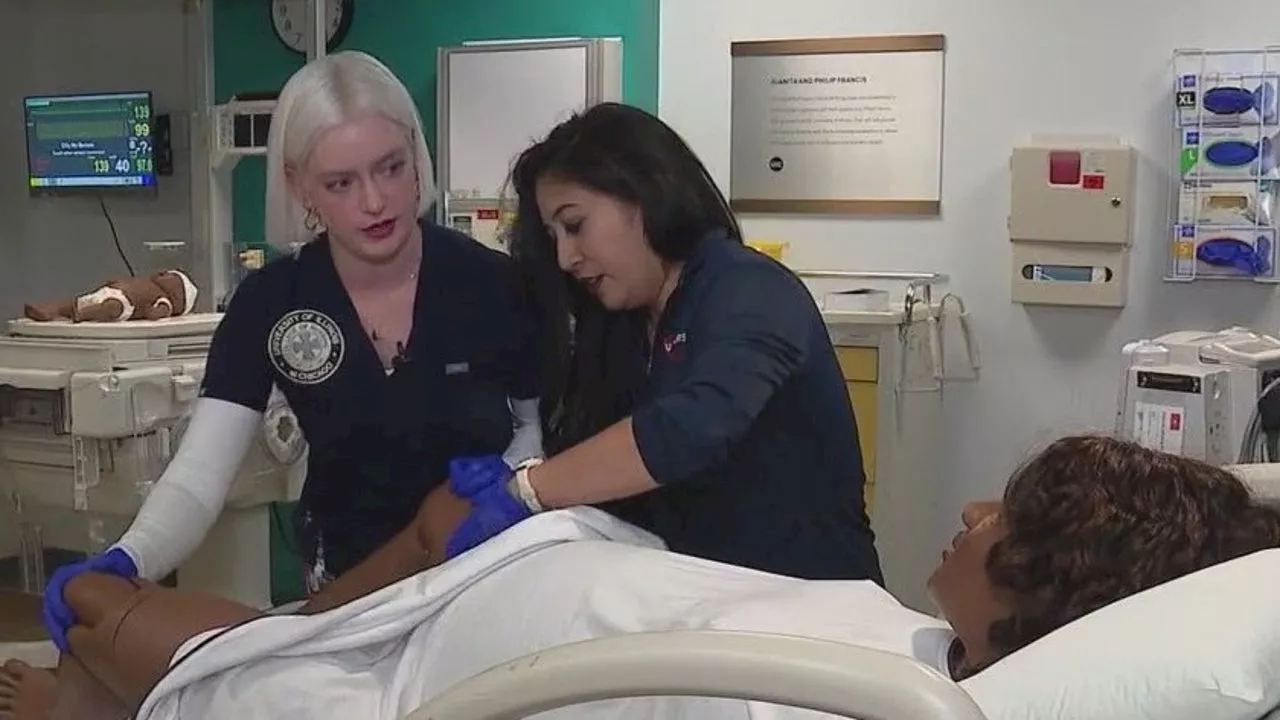Health
Innovative Surgery Restores Women’s Confidence After Breast Cancer

Breast cancer treatment has taken a significant step forward with a new surgical option being offered at a hospital in suburban Chicago. This procedure not only aims to remove cancer but also to preserve the patient’s sense of self. According to the American Cancer Society, over 300,000 women will be diagnosed with invasive breast cancer this year, often requiring multiple surgeries to ensure complete removal of cancer cells.
One patient, Jody Simmons, shared her experience after being diagnosed with stage zero breast cancer two years ago. Following a routine mammogram, Simmons faced uncertainty regarding her surgical options. “I thought it was a great way to approach the recovery,” she said. “For me, it was more about feeling whole afterwards.”
Her surgeon, Dr. Catherine Pesce, an oncologist at Endeavor Health, noted that stage zero breast cancer is often microscopic and can require extensive tissue removal. “We are always worried about making you asymmetrical if we remove too much tissue on one side,” said Pesce. This concern drives the need for innovative surgical techniques that minimize the impact on the patient’s appearance.
Oncoplastic Breast Reduction: A Revolutionary Approach
To address these concerns, Simmons was introduced to a technique known as oncoplastic breast reduction. Dr. Mark Sisco, the head of plastic surgery at Endeavor Health, explained that this approach combines cancer surgery with aesthetic procedures. “This is one of the few operations where a cancer patient could go to sleep, have their cancer removed, and wake up feeling better about their body than they went to sleep,” Sisco stated.
In Simmons’s case, Pesce performed a lumpectomy on her left breast, while Sisco conducted a small breast reduction on the right side. He also rearranged tissue on the left to maintain balance. “A lumpectomy alone takes about an hour, and recovery is usually about a week. Adding the oncoplastic reduction only adds about a week to recovery,” said Pesce. This dual approach has the added benefit of helping patients avoid mastectomies, which often require more complicated reconstruction.
Sisco emphasized that simultaneous procedures can lead to better outcomes. “We are avoiding a second surgery in many cases, and it can be more challenging to fix things after treatments like radiation,” he noted.
Perhaps the most significant advantage of this procedure is the ability to establish clean margins—ensuring that no cancer cells remain. “We take an x-ray while in surgery to confirm that we have clear margins around the lesion,” Pesce explained. This proactive approach reduces the chance of cancer recurrence.
Access and Advocacy in Breast Cancer Treatment
Despite the positive outcomes associated with oncoplastic procedures, many women across the United States may not have access to this type of surgery. Research published in the National Library of Medicine highlights a shortage of reconstructive plastic surgeons in certain regions, as well as challenges in scheduling concurrent surgeries.
In Simmons’s case, her surgical team was able to coordinate their schedules effectively, allowing for a streamlined process. “We can perform three or four of these surgeries in one day,” said Pesce, indicating the efficiency of their collaborative approach.
Reflecting on her experience, Simmons expressed gratitude for the opportunity to choose this surgical option. “You look at the scars every day in the mirror, and it just makes you feel—at least for me—it made me whole,” she stated.
As patients navigate their surgical options, doctors encourage advocacy for available procedures. “Patients should ask if this procedure is available when considering their surgical options,” Sisco advised. The combination of aesthetic and oncological surgery represents a significant advancement in the treatment of breast cancer, empowering women not only to fight the disease but also to maintain their self-esteem and body image.
-

 Science2 months ago
Science2 months agoInventor Achieves Breakthrough with 2 Billion FPS Laser Video
-

 Health2 months ago
Health2 months agoCommunity Unites for 7th Annual Into the Light Walk for Mental Health
-

 Top Stories2 months ago
Top Stories2 months agoCharlie Sheen’s New Romance: ‘Glowing’ with Younger Partner
-

 Entertainment2 months ago
Entertainment2 months agoDua Lipa Aces GCSE Spanish, Sparks Super Bowl Buzz with Fans
-

 Health2 months ago
Health2 months agoCurium Group, PeptiDream, and PDRadiopharma Launch Key Cancer Trial
-

 Top Stories2 months ago
Top Stories2 months agoFormer Mozilla CMO Launches AI-Driven Cannabis Cocktail Brand Fast
-

 Entertainment2 months ago
Entertainment2 months agoMother Fights to Reunite with Children After Kidnapping in New Drama
-

 World2 months ago
World2 months agoIsrael Reopens Rafah Crossing After Hostage Remains Returned
-

 World2 months ago
World2 months agoR&B Icon D’Angelo Dies at 51, Leaving Lasting Legacy
-

 Business2 months ago
Business2 months agoTyler Technologies Set to Reveal Q3 Earnings on October 22
-

 Health2 months ago
Health2 months agoNorth Carolina’s Biotech Boom: Billions in New Investments
-

 Health2 months ago
Health2 months agoYouTube Launches New Mental Health Tools for Teen Users








